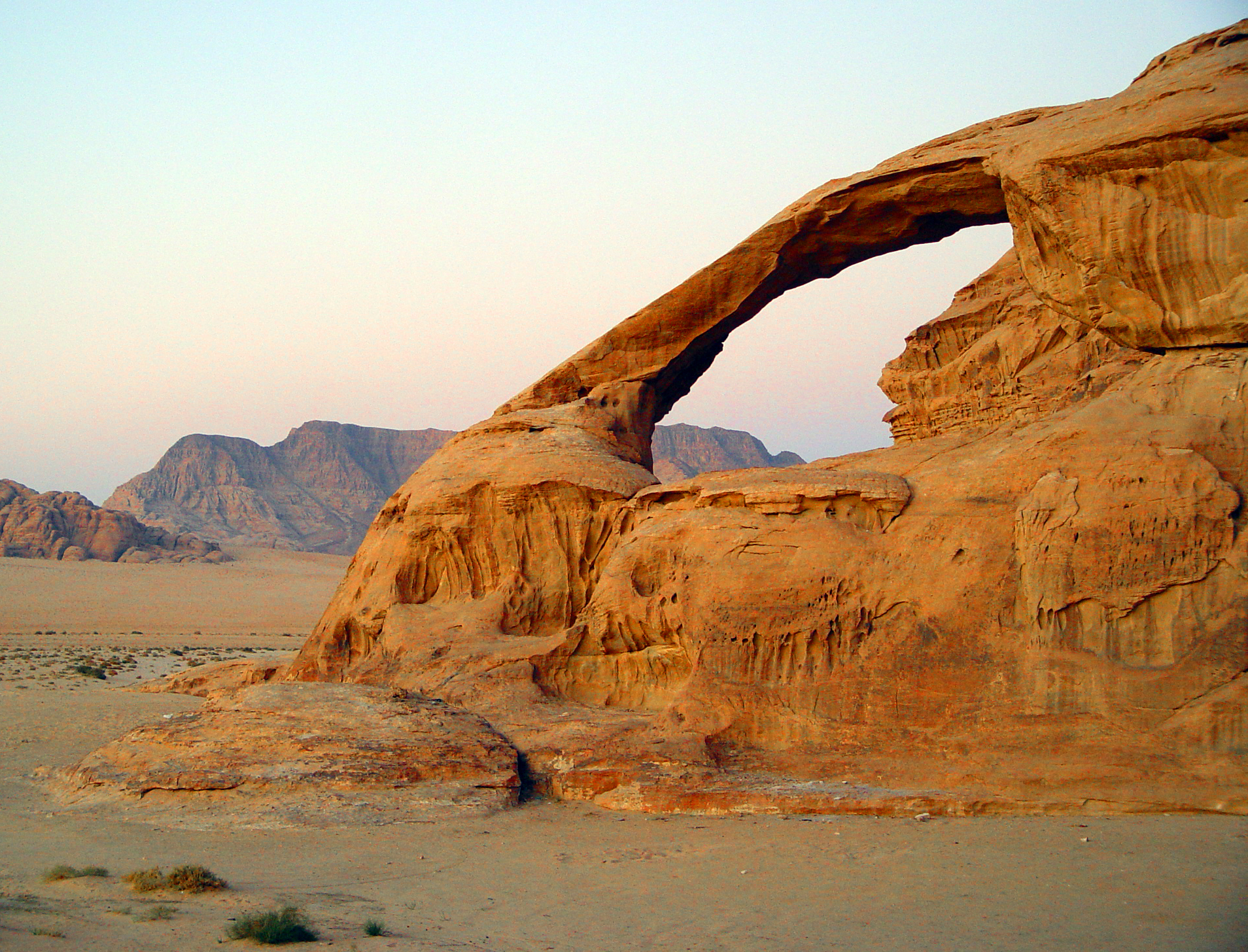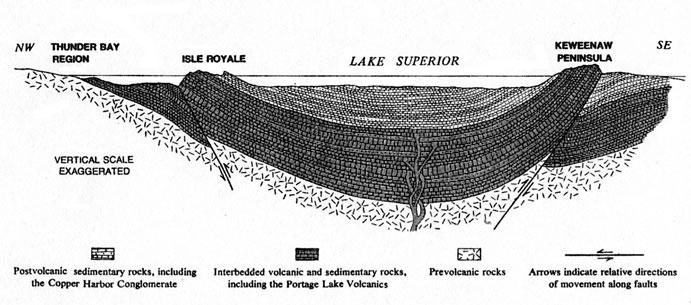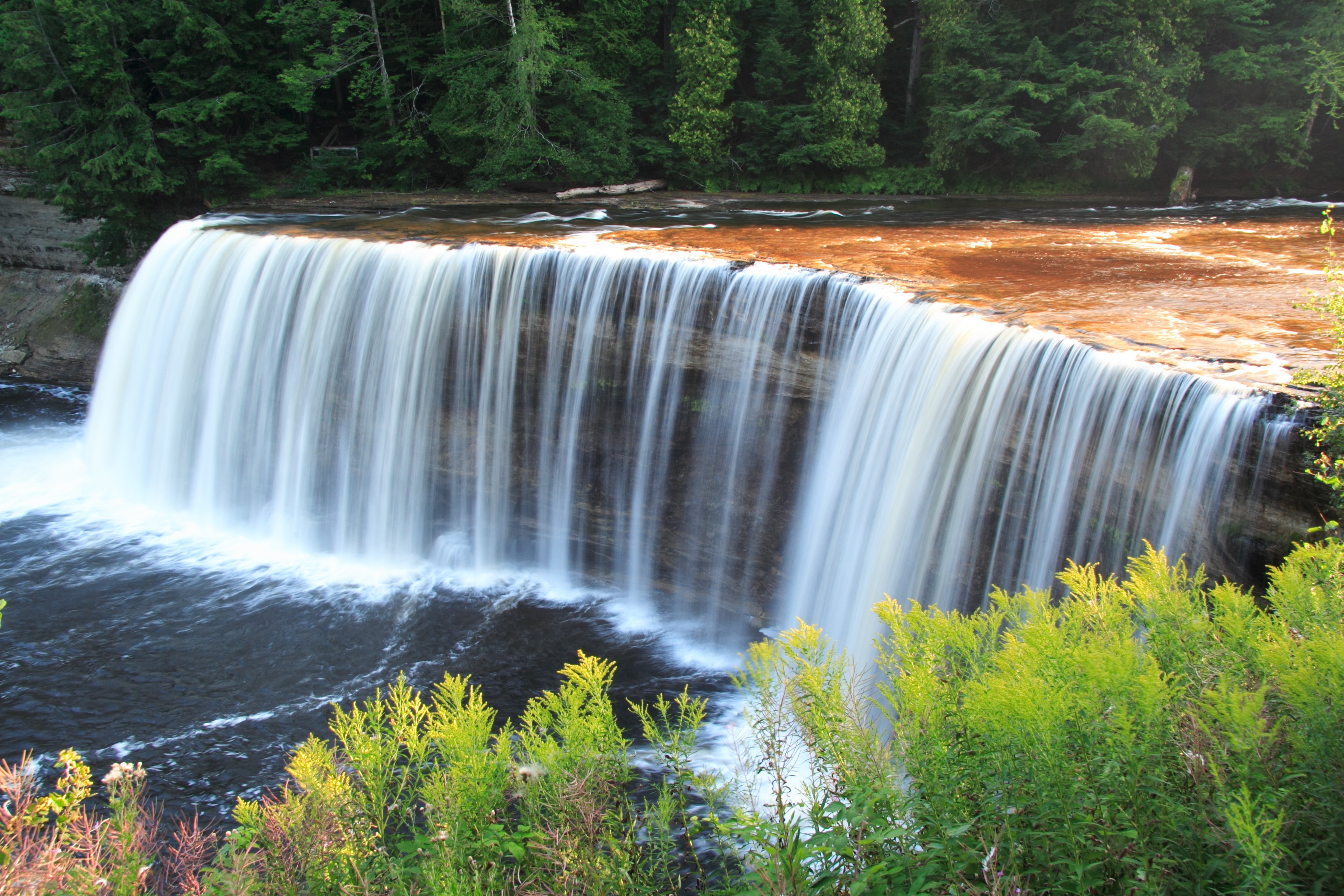|
Native Copper
Native copper is an uncombined form of copper that occurs as a natural mineral. Copper is one of the few metallic elements to occur in native form, although it most commonly occurs in oxidized states and mixed with other elements. Native copper was an important ore used by pre-historic peoples. The name copper comes from the Greek ''kyprios'', "of Cyprus", the location of native copper mines since pre-historic times. Native copper typically occurs as irregular masses and fracture fillings, and rarely as isometric cubic and octahedral crystals. It has a reddish, orangish, and/or brownish color on fresh surfaces, but typically is weathered to a state of verdigris and coated with a green or blue-green tarnish or patina of copper(II) carbonate. Its specific gravity is 8.9 and Mohs hardness is 2.5–3. The mines of the Keweenaw native copper deposits of Upper Michigan were major copper producers in the 19th and early 20th centuries, and are the largest deposits of native co ... [...More Info...] [...Related Items...] OR: [Wikipedia] [Google] [Baidu] |
Native Metal
A native metal is any metal that is found pure in its metallic form in nature. Metals that can be found as native element mineral, native deposits singly or in alloys include antimony, arsenic, bismuth, cadmium, chromium, cobalt, indium, iron, manganese, molybdenum, nickel, niobium, rhenium, tantalum, tellurium, tin, titanium, tungsten, vanadium, and zinc, as well as the gold group (gold, copper, lead, aluminium, mercury (element), mercury, silver) and the platinum group (platinum, iridium, osmium, palladium, rhodium, ruthenium). Among the alloys found in native state have been brass, bronze, pewter, German silver, osmiridium, electrum, white gold, silver-mercury amalgam (chemistry), amalgam, and gold-mercury amalgam. Only gold, silver, copper and the platinum group occur native in large amounts. Over geological time scales, very few metals can resist natural weathering processes like oxidation, so mainly the less reactive metals such as gold and platinum are found as native metal ... [...More Info...] [...Related Items...] OR: [Wikipedia] [Google] [Baidu] |
Weathering
Weathering is the deterioration of rocks, soils and minerals (as well as wood and artificial materials) through contact with water, atmospheric gases, sunlight, and biological organisms. It occurs '' in situ'' (on-site, with little or no movement), and so is distinct from erosion, which involves the transport of rocks and minerals by agents such as water, ice, snow, wind, waves and gravity. Weathering processes are either physical or chemical. The former involves the breakdown of rocks and soils through such mechanical effects as heat, water, ice and wind. The latter covers reactions to water, atmospheric gases and biologically produced chemicals with rocks and soils. Water is the principal agent behind both kinds, though atmospheric oxygen and carbon dioxide and the activities of biological organisms are also important. Biological chemical weathering is also called biological weathering. The materials left after the rock breaks down combine with organic material to create so ... [...More Info...] [...Related Items...] OR: [Wikipedia] [Google] [Baidu] |
Lake Superior
Lake Superior is the largest freshwater lake in the world by surface areaThe Caspian Sea is the largest lake, but is saline, not freshwater. Lake Michigan–Huron has a larger combined surface area than Superior, but is normally considered two separate lakes. and the third-largest freshwater lake by volume, holding 10% of the fresh water in all of the world's rivers and lakes. Located in central North America, it is the northernmost and westernmost of the Great Lakes of North America, straddling the Canada–United States border with the Canadian province of Ontario to the north and east and the U.S. states of Minnesota to the west and Michigan and Wisconsin to the south. It drains into Lake Huron via St. Marys River, then through the lower Great Lakes to the St. Lawrence River and ultimately the Atlantic Ocean. Name The Ojibwe name for the lake is ''gichi-gami'' (in syllabics: , pronounced ''gitchi-gami'' or ''kitchi-gami'' in different dialects), meaning "great sea". ... [...More Info...] [...Related Items...] OR: [Wikipedia] [Google] [Baidu] |
Isle Royale
Isle Royale (, ) is an Islands of the Great Lakes, island of the Great Lakes located in the northwest of Lake Superior and part of the U.S. state of Michigan. The island and the 450 surrounding smaller islands and waters make up Isle Royale National Park. Isle Royale is long and wide, with an area of , making it the Lake island#Naturally occurring lake islands, by area, fourth-largest lake island in the world. In addition, it is the largest natural island in Lake Superior, the second-largest island in the Great Lakes (after Manitoulin Island), the third-largest in the contiguous United States (after Long Island and Padre Island), the largest in the contiguous US with no road link to the mainland, and the List of islands of the United States by area, 33rd-largest island in the United States. Isle Royale is defined by the United States Census Bureau as census tract, Census Tract 9603 of Keweenaw County, Michigan (a county found in the state's Upper Peninsula of Michigan, Upper ... [...More Info...] [...Related Items...] OR: [Wikipedia] [Google] [Baidu] |
Copper Island
Copper Island is a local name given to the northern part of the Keweenaw Peninsula (projecting northeastward into Lake Superior at the western end of the Upper Peninsula of Michigan, United States of America), separated from the rest of the Keweenaw Peninsula by Portage Lake and the Keweenaw Waterway. Geography The area was "isolated" by dredging in 1859 and construction in the 1860s of a ship canal across an isthmus of the Keweenaw Peninsula from Portage Lake—on the east side of the Keweenaw Peninsula—to Lake Superior on the west. The ship canal is wide and deep. The resulting "island" was called ''Kuparisaari'' (meaning "Copper Island") by Finnish, Irish, and French/French Canadian settlers in the area. However, neither the United States Geological Survey nor the state of Michigan identify this area as an island or use this name. Isle Royale is the largest naturally isolated island in Lake Superior; considered as an island, Copper Island would be the largest, wi ... [...More Info...] [...Related Items...] OR: [Wikipedia] [Google] [Baidu] |
Copper Country
The Copper Country is an area in the Upper Peninsula of Michigan in the United States, including Keweenaw County, Michigan, Houghton, Baraga and Ontonagon counties as well as part of Marquette County. The area is so named as copper mining was prevalent there from 1845 until the late 1960s, with one mine (the White Pine mine) continuing through 1995. The region includes Copper Island, Copper Harbor and Isle Royale. In its heyday in the latter half of the 19th century and the early 20th century, the area was the world's greatest producer of copper. Native copper Copper Country is highly unusual among mining districts in that the copper mined was predominantly in its elemental ("native") form, rather than in the form of compounds (mostly oxides and sulfides) that form the basis of the copper ore at almost every other copper-mining district. History Supporting the Old Copper complex, Native Americans mined copper from small pits as early as 3000 B.C. on this peninsula ... [...More Info...] [...Related Items...] OR: [Wikipedia] [Google] [Baidu] |
Keweenaw Peninsula
The Keweenaw Peninsula (, ) is a peninsula of the U.S. state of Michigan. Part of the greater landmass of the Upper Peninsula of Michigan, Upper Peninsula, the Keweenaw Peninsula projects about northeasterly into Lake Superior, forming Keweenaw Bay. The peninsula is part of Michigan's Copper Country region, as the region was home to the first major Copper mining in the United States, copper mining boom in the United States. Copper mining was active in this region from the 1840s to the 1960s. The peninsula is bisected by the Keweenaw Waterway, a partly natural, partly artificial waterway serving as a canal. The north side of the canal is known locally as Copper Island. The cities of Houghton, Michigan, Houghton, the peninsula's largest population center, and Hancock, Michigan, Hancock, are located along the shores of the Keweenaw Waterway. Houghton is home to Michigan Technological University. The Keweenaw Peninsula is politically divided primarily between Houghton County, Mich ... [...More Info...] [...Related Items...] OR: [Wikipedia] [Google] [Baidu] |
Upper Peninsula Of Michigan
The Upper Peninsula of Michigan—also known as Upper Michigan or colloquially the U.P. or Yoop—is the northern and more elevated of the two major landmasses that make up the U.S. state of Michigan; it is separated from the Lower Peninsula of Michigan, Lower Peninsula by the Straits of Mackinac. It is bounded primarily by Lake Superior to the north, separated from the Canadian province of Ontario at the east end by the St. Marys River (Michigan–Ontario), St. Marys River, and flanked by Lake Huron and Lake Michigan along much of its south. Although the peninsula extends as a geographic feature into the state of Wisconsin, the state boundary follows the Montreal River (Wisconsin–Michigan), Montreal and Menominee River, Menominee rivers and a line connecting them. First inhabited by Algonquian languages, Algonquian-speaking native American tribes, the area was explored by French colonists, then occupied by British forces, before being ceded to the newly established United Sta ... [...More Info...] [...Related Items...] OR: [Wikipedia] [Google] [Baidu] |
Keweenaw
The Keweenaw Peninsula (, ) is a peninsula of the U.S. state of Michigan. Part of the greater landmass of the Upper Peninsula, the Keweenaw Peninsula projects about northeasterly into Lake Superior, forming Keweenaw Bay. The peninsula is part of Michigan's Copper Country region, as the region was home to the first major copper mining boom in the United States. Copper mining was active in this region from the 1840s to the 1960s. The peninsula is bisected by the Keweenaw Waterway, a partly natural, partly artificial waterway serving as a canal. The north side of the canal is known locally as Copper Island. The cities of Houghton, the peninsula's largest population center, and Hancock, are located along the shores of the Keweenaw Waterway. Houghton is home to Michigan Technological University. The Keweenaw Peninsula is politically divided primarily between Houghton and Keweenaw counties, both of which occupy the Houghton micropolitan area. A small portion of the southeast ... [...More Info...] [...Related Items...] OR: [Wikipedia] [Google] [Baidu] |
Mohs Hardness
The Mohs scale ( ) of mineral hardness is a qualitative ordinal scale, from 1 to 10, characterizing scratch resistance of mineral In geology and mineralogy, a mineral or mineral species is, broadly speaking, a solid substance with a fairly well-defined chemical composition and a specific crystal structure that occurs naturally in pure form.John P. Rafferty, ed. (2011): Mi ...s through the ability of harder material to scratch softer material. The scale was introduced in 1812 by the German geologist and Mineralogy, mineralogist Friedrich Mohs, in his book (English: Attempt at an elementary method for the natural-historical determination and recognition of fossils); it is one of several definitions of hardness comparison, hardness in materials science, some of which are more quantitative. The method of comparing hardness by observing which minerals can scratch others is of great antiquity, having been mentioned by Theophrastus in his treatise ''On Stones'', , followed by ... [...More Info...] [...Related Items...] OR: [Wikipedia] [Google] [Baidu] |
Specific Gravity
Relative density, also called specific gravity, is a dimensionless quantity defined as the ratio of the density (mass of a unit volume) of a substance to the density of a given reference material. Specific gravity for solids and liquids is nearly always measured with respect to water at its densest (at ); for gases, the reference is air at room temperature (). The term "relative density" (abbreviated r.d. or RD) is preferred in SI, whereas the term "specific gravity" is gradually being abandoned. If a substance's relative density is less than 1 then it is less dense than the reference; if greater than 1 then it is denser than the reference. If the relative density is exactly 1 then the densities are equal; that is, equal volumes of the two substances have the same mass. If the reference material is water, then a substance with a relative density (or specific gravity) less than 1 will float in water. For example, an ice cube, with a relative density of about 0.91, will float. ... [...More Info...] [...Related Items...] OR: [Wikipedia] [Google] [Baidu] |
Copper(II) Carbonate
Copper(II) carbonate or cupric carbonate is a chemical compound with formula . At ambient temperatures, it is an ionic solid (a salt) consisting of copper(II) cations and carbonate anions . This compound is rarely encountered because it is difficult to prepare and readily reacts with water moisture from the air. The terms "copper carbonate", "copper(II) carbonate", and "cupric carbonate" almost always refer (even in chemistry texts) to a basic copper carbonate (or copper(II) carbonate hydroxide), such as (which occurs naturally as the mineral malachite) or (azurite). For this reason, the qualifier neutral may be used instead of "basic" to refer specifically to . Preparation Reactions that may be expected to yield , such as mixing solutions of copper(II) sulfate and sodium carbonate in ambient conditions, yield instead a basic carbonate and , due to the great affinity of the ion for the hydroxide anion . Thermal decomposition of the basic carbonate at atmospheric pressur ... [...More Info...] [...Related Items...] OR: [Wikipedia] [Google] [Baidu] |









